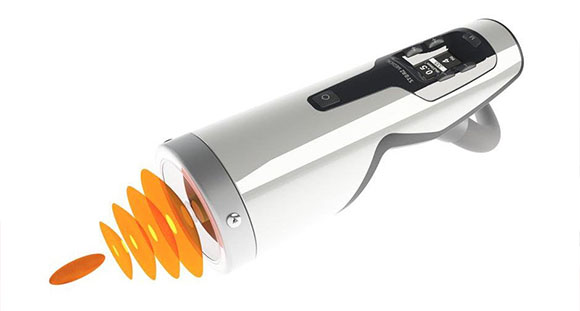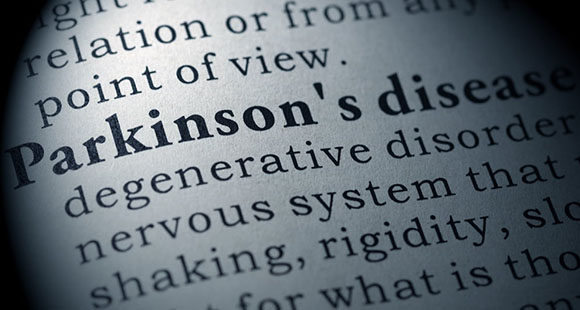
Peyronie's Disease Treatment in London
Mansmatters is recognised as the UK's leading clinic for non-invasive treatments for Peyronie's Disease (PD) and has been at the forefront of technological advancements.
Peyronie's Disease is a challenging condition for many men – it can develop suddenly or over time, sometimes without an apparent cause. Many men experience distress as a once straight penis may become curved during erection
Arrange a Complimentary Telephone Consultation
Book a Treatment or Diagnosis
Receive More Information

How does Peyronie's Disease effect men?
All men are different and Peyronie's Disease can result in a banana, boomerang, hourglass, hammerhead, corkscrew, or indented shape (Often with a swing to one side), a significant reduction in size and a weakness upon erection.
This also comes with a number of further side effects including pain, a lump in the penis (fibrous plaque), narrowing of the girth and restricted blood supply. The cause is a benign (non-cancerous) plaque that forms in the inner lining (tunica albuginea) of the penis.
Anatomical depiction of Peyronie's Disease plaque formation in the tunica albuguines

?
Skip the Long Wait for Treatment & Avoid the Surgeon's Knife
Although Peyronie's Disease has been treated for over 250-years, it is not considered a critical condition and many men, since the pandemic, will feel that they have been at the back of the queue for Peyronie's Disease treatment and advice.
Those that do get specialist advice are often told to take vitamin E and use a Penis pump and wait for 18-months to two years, when they may be scheduled for life-changing surgery.
During this time, depression sets in, relationships fracture and a man's sense of self-worth severely diminishes. Some men may be able to have sex, whilst with others the Peyronie's Disease will be too severe or too painful for their partners.
Find out more how MansMatters can help you.
Contact us for a free 20-minute consultation with our men's health specialists.
Arrange a Free Telephone Consultation
Book a Treatment or Diagnosis
Receive More Information

Approaches to Peyronie's treatment
We use a variety of technologies, including focused shockwave therapy—originally developed for breaking kidney stones and adapted for treating Peyronie's Disease—combined with magnetotransduction and Nanovi Exo therapy. We also utilise sophisticated devices to reshape the penis, supplemented with oral and topical medications and a mechanical device.
Our specialists at the Surrey and London clinics perform this treatment to the affected area, which may help in straightening the curvature with minimal discomfort and aims to preserve penile sensitivity and length, though individual results may vary


Rediscover a Healthy and Pain-Free Sex Life
We have helped many patients work towards a healthy and pain-free sex life. Our programme is a non-invasive treatment that may help improve symptoms of Peyronie's Disease in men at both early and later stages, allowing them to enjoy renewed sexual spontaneity and intimacy with confidence.”
Find out more how MansMatters can help you.
Contact us for a free 20-minute consultation with our men's health specialists.
Arrange a Complimentary Telephone Consultation
Book a Treatment or Diagnosis
Receive More Information

How Does the Technology Work?
Focused Shockwave for Peyronie's Disease is a sophisticated medical treatment. It works by directing specially focused shockwaves—typically well-tolerated—on the plaque to weaken, break, and reduce it. The broken fibrosis is then remodelled, re-absorbed, and recycled by the body. During this process, a beneficial side effect known as angiogenesis (the formation of new blood vessels) may support the potential for improved erection quality.


Accurate, Non-Invasive, and Effective Treatment
We use the latest techniques to accurately locate the plaque, assess its size, and determine the best course of treatment. A hand-held device is placed on the shaft of the penis, and a series of low-level shockwaves are administered. These impulses are typically well-tolerated. Treatment takes about 30 minutes, after which the patient can carry on life as normal, though some individuals may experience mild effects. Treatments are carried out by a practising doctor or a medically trained shockwave specialist.
Shockwave treatment is non-invasive and typically requires just short visits to our clinic for the duration specified by the specialist. While most patients do not report side effects, some patients may notice improvements within two weeks after therapy begins. It is important to note that Peyronie's Disease can be a stubborn condition and, in some cases, may be resistant to all non-invasive and non-surgical treatments

Read What Peyronie's Disease Patients Say
Read through our past patient's experiences with our Peyronie's Disease treatments.
About a year ago I contacted MansMatters – best decision I ever made...
To all chaps with Peyronie’s and erection issues – when I was 55 I noticed a small hard lump on my penis shaft the size of a pea. This slowly grew to about 30mm. I lived with this in secret which was a mistake in the long run. I read about Peyronie’s and realised it effects about 10% of men. About a year ago I contacted MansMatters – best decision I ever made. I was a little embarrassed to start with but after 1st appointment I was OK.
Please chaps don’t leave it like I did – make the call...
I’m 58 now and after a course of treatment lump is smaller and still getting smaller, my curve is less and my erections are improving and YES, happy wife and happy life. Please chaps don’t leave it like I did – make the call.
Extremely pleased with the outcome...
Pain was stopped after the very first session. Scaring softened by the third session. Erection was back to normal, fulness and hardness. Still a very slight curve, but I think this was natural. Extremely pleased with the outcome.
Listen to Our Peyronie's Disease Radio Interview
Our Senior Consultant Mr. Almashan was interviewed at the Royal Society of Medicine.
Peyronie's Disease FAQs
What is Peyronie’s Disease or PD?
Peyronie’s Disease is a medical condition in men that can cause severe penile curvature or other forms of deformity. This condition can also lead to significant pain in the penis, impacting a man's ability to achieve satisfactory sexual experiences. PD occurs due to the formation of fibrous plaques in the inner lining of the penis
How Does PD Affect a Man's Sex Life?
PD can have a significant impact on a man’s sex life. If the penile curvature is severe and associated with pain, it may make having sex extremely difficult and may even hinder sexual activity in severe cases. This condition can also affect the psychological well-being of those affected.
How Does PD Affect Couples?
PD not only affects men but also has a negative impact on their romantic relationships. A lack of satisfactory sex can affect the emotional well-being of both the man and his partner. Frustrations may arise, potentially leading to stress and anxiety. If the issue is not treated, it may contribute to significant relationship challenges.
Is Peyronie’s Disease a Common Problem?
While Peyronie’s disease is not as common as erectile dysfunction, according to clinical research data, it is estimated that approximately 10% of men in the UK may experience PD
Can Peyronie's Disease Just Go Away?
Some mild cases of Peyronie’s Disease have been reported to resolve without treatment, but spontaneous resolution of penile curvature or plaques without treatment is uncommon. It’s advisable to consult with a specialist to assess the severity of PD and determine the most suitable treatment options for you
What is the Most Common Cause of Peyronie’s Disease?
The most common cause of Peyronie’s Disease is penile injury or trauma. Injury to the penis can occur due to various factors, including accidents and vigorous activities, such as sports or sexual intercourse. Additionally, repeated attempts at sexual intercourse with weak or incomplete erections may contribute to the development of PD, so if you experience weak erections, it is advisable to seek help for erectile dysfunction
Is Penile Injury the Only Cause of PD?
No. Although penile injury is the most common cause of Peyronie’s Disease, there are other known causes as well. Having a family member with Peyronie’s Disease may increase the risk for other men in the family. Additionally, research suggests that men with Dupuytren’s contracture or Ledderhose disease may have a higher propensity to develop Peyronie’s Disease
Does Peyronie’s Disease Make the Penis Smaller?
Peyronie’s Disease may lead to a reduction in penile length. Shockwave therapy for Peyronie’s Disease may improve blood vessel function and potentially assist in restoring length.
Can Smoking Increase the Risk of Developing PD?
Although smoking doesn’t directly cause Peyronie’s Disease, various research studies indicate that smoking may increase the risk of developing the condition.
Is There Any Relationship Between Peyronie’s Disease and Testosterone Hormone Level?
Studies have shown that Peyronie’s Disease and testosterone are not directly linked. However, men with PD may have lower testosterone levels
Is High Blood Pressure Associated with PD?
Yes. High blood pressure is associated with Peyronie’s Disease, as it may contribute to the risk of developing it in men. Additionally, high cholesterol levels may also contribute to the risk of developing PD
Is There Any Link Between PD and Diabetes?
Yes. Studies have shown that there is a strong link between diabetes and Peyronie’s Disease (PD). Men with diabetes may have a significantly higher risk of developing PD compared to men without diabetes.
Are There Any Other Risk Factors for PD?
Other factors that may contribute to the risk of Peyronie’s Disease (PD) include ageing, Paget’s disease of the bone, Lupus, Sjögren’s Syndrome, and prostate cancer surgery.”
Is There Any Connection Between Peyronie’s Disease and Dupuytren’s Disease?
Research has indicated that men with Dupuytren’s disease may have an increased risk of developing Peyronie’s Disease (PD), a correlation recognized since 1828
Does PD Play Any Role in the Development of Depression?
eyronie’s Disease (PD) may contribute to stress, anxiety, and depression in men. These psychological issues can, in turn, negatively impact overall and sexual health
Can a Man Suffer from ED Due to PD?
Yes. Men with Peyronie’s Disease (PD) may experience increased difficulty in obtaining and maintaining erections.”
What is the Relationship Between PD and ED?
Fibrous plaques associated with Peyronie’s Disease (PD), which cause the penis to bend, may also impair penile blood flow, which is necessary for obtaining and maintaining erections. Additionally, stress, anxiety, and depression caused by PD can significantly contribute to the development of erectile dysfunction in PD patients.
What are the stages of PD?
There are primarily two stages of Peyronie’s Disease (PD). Stage 1 is known as the acute phase, and Stage 2 is known as the chronic phase. In the acute phase, fibrous plaques start to form, and patients may experience pain in the penis. In the chronic phase, penile plaques become fully formed, and pain may subside.
Can Peyronie’s Disease be Avoided?
Peyronie’s Disease (PD) cannot be avoided with 100% certainty. However, the risk of developing this disease may be reduced by leading a healthy lifestyle and avoiding penile injuries, such as vigorous sexual activity or contact sports like rugby.
Can Peyronie’s Disease be Treated?
Yes. With effective treatments, it may be possible to reduce penile curvature and improve the condition of Peyronie’s Disease (PD).
Can Non-invasive Treatments be Effective in the Treatment of PD?
Yes. Non-invasive treatments are often preferred as the first line of treatment for most patients. Our modern non-invasive procedures may help to minimise penile curvature and treat Peyronie’s Disease (PD)
What Type of Treatments Do You Provide to Treat Peyronie’s Disease?
We provide non-invasive treatments for Peyronie’s Disease (PD). Our advanced treatment protocol consists of focused shockwave therapy, EMTT, and NanoVi
How Effective is Shockwave Therapy in Treating PD?
Not all shockwave treatments are equal, and some are not suitable for treating Peyronie’s Disease (PD); however, our focused shockwave therapy may help to minimise penile curvature and improve blood flow in the penis. We have treated hundreds of men suffering from PD using focused shockwave therapy along with a combination of complementary therapies
How Does Shockwave Therapy Treat PD?
Shockwave therapy uses special shockwaves to break down the fibrous plaques in the penis, which may help to reduce penile curvature. The plaques displaced during the treatment are absorbed by the body. Shockwave therapy also generates new blood vessels, which may improve blood flow in the penile tissues
Is Shockwave Therapy Compatible with Other PD Therapies?
Yes. Shockwave therapy can be combined with our other treatments for Peyronie’s Disease (PD), including EMTT and NanoVi.
Are Non-invasive PD Treatment Therapies Safe?
Yes. Our treatment procedures are completely safe. None of our treatments have any sort of negative side-effects.
Knightsbridge
Richmond
Related Medical Conditions
Lifestyle
Men's Health
Erectile Dysfunction & Other Conditions
Useful Links
MansMatters is a Division of:

Privacy Policy | Terms & Conditions
















